Talks by Prakash Nair approved by the american institute of architects and the association for learning environments
| No | Subject | 20-Minute Plenary | 30-60 Minute Keynote | 90-120 Minute Workshop | Full Day Masterclass |
|---|---|---|---|---|---|
| 1 | Fundamentals of Good School Design | X | X | X | |
| 2 | Blueprint for Tomorrow. Redesigning Schools for Student-Centered Learning | X | X | X | X |
| 3 | Design for Learning in the Creative Age | X | X | X | X |
| 4 | The Language of School Design | X | X |
On this page, you will find a series of talks and also a Masterclass on School Design. These “talks” are more than standard PowerPoint presentations. The longer ones include customized surveys and other audience participation activities. These topics can be developed as interactive 60-minute sessions or Plenary Type Plenary/Keynote sessions of 18-30 mins. To invite Prakash Nair to participate in your event, you can call him directly at +1 917.406.3120.
Fundamentals of Good School Design
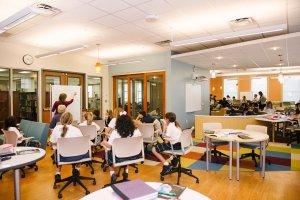 School construction expenditures provide the perfect opportunity to rethink existing models and serve as a catalyst to transition to new methods for teaching and learning that take advantage of today’s highly networked and connected world. Seminar participants will gain specific knowledge and understanding of factors to consider when designing K-12 schools that cover a) Architectural and Interior Design Strategies; 2) Environmental Considerations ; and 3) Educational Drivers for Good School Design. Suitable follow-up reading materials will also be provided.
School construction expenditures provide the perfect opportunity to rethink existing models and serve as a catalyst to transition to new methods for teaching and learning that take advantage of today’s highly networked and connected world. Seminar participants will gain specific knowledge and understanding of factors to consider when designing K-12 schools that cover a) Architectural and Interior Design Strategies; 2) Environmental Considerations ; and 3) Educational Drivers for Good School Design. Suitable follow-up reading materials will also be provided.
LEARNING OBJECTIVES
- Seminar participants will learn about specific, environmentally conscious, cost-effective design and construction strategies. They can apply these strategies to their own work with both public and private school clients.
- Participants will understand and be able to design schools that are driven by the latest research in the world of education and neurology – brain-based learning.
- The Seminar will help participants acquire and develop good interior design skills optimized to yield the best learning outcomes – skills that can be applied in the field while planning and designing K-12 learning environments.
- Those who attend this Seminar will come away with a sound understanding of the essential foundational elements of good school design – and they can utilize this understanding to move schools and school districts away from the traditional and obsolete school buildings that still dominate the educational landscape and toward healthier, more sustainable and functional designs.
Blueprint for Tomorrow Redesigning Schools for student-centered learning
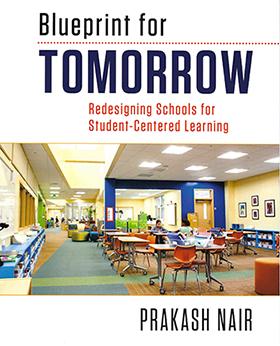 Using the built learning environment as the template for change, this Seminar will cover the full range of architectural, educational and operational challenges that must be faced and overcome in order to move schools from a teacher-centered to a student-centered model of education. Based largely on the author’s book with the same title published by Harvard Education Press, this Seminar will address the following topics: 1) Why traditional school design fails our kids; 2) “Reading” school buildings – A Visual Literacy Primer; 3) Designing Safe Environments that Encourage Collaboration; 4) Integrated Learning Areas; and 5) Putting Theory into Practice. Suitable follow-up reading materials will also be provided.
Using the built learning environment as the template for change, this Seminar will cover the full range of architectural, educational and operational challenges that must be faced and overcome in order to move schools from a teacher-centered to a student-centered model of education. Based largely on the author’s book with the same title published by Harvard Education Press, this Seminar will address the following topics: 1) Why traditional school design fails our kids; 2) “Reading” school buildings – A Visual Literacy Primer; 3) Designing Safe Environments that Encourage Collaboration; 4) Integrated Learning Areas; and 5) Putting Theory into Practice. Suitable follow-up reading materials will also be provided.
LEARNING OBJECTIVES
- Seminar participants will learn how to recognize and avoid the pitfalls of widely accepted but deeply flawed design practices that negatively impact student well-being and achievement.
- Participants will be introduced to and learn how to use tools and techniques to measure the effectiveness of learning spaces and use this expertise to provide cost-effective solutions.
- The Seminar will help participants acquire and develop good interior design skills o optimized to yield the best learning outcomes – skills that can be applied in the field while planning and designing K-12 learning environments.
- Those who attend this Seminar will be able to design learning spaces that facilitate the delivery of more holistic, interdisciplinary courses while encouraging both students and teachers to develop socially and emotionally via cooperation and collaboration.
Design for Learning in the Creative Age
 The learning that happens in most schools is pre-determined by a design best suited for an industrial, mass-production model. In short, “school hardware” severely limits the “educational software” it can run.
The learning that happens in most schools is pre-determined by a design best suited for an industrial, mass-production model. In short, “school hardware” severely limits the “educational software” it can run.
This Seminar will go beyond architectural strategies to modify obsolete school buildings. It will also show how the obsolete physical shape of schools points to a far more troubling reality that education itself has become obsolete. Thus, by reshaping schools to represent true Learning Buildings, we will also have an opportunity to physically manifest new and more powerful philosophies of learning.
Showcasing several international school design case studies featuring both new buildings and renovations, this presentation will provide specific and immediately usable ideas to transform learning, the learning environment for all students and, by extension, education itself. Suitable follow-up reading materials will also be provided.
LEARNING OBJECTIVES
- Seminar participants will learn how to apply the principles of good school design to effectively and cost-effectively renovate older buildings to realize highly effective places for teaching and learning.
- Participants will be introduced to and learn how to use tools and techniques to measure the effectiveness of learning spaces and use this expertise to provide cost-effective solutions.
- The Seminar will focus on ways in which architectural design can become the vehicle to improve student social, emotional and physical wellbeing as a way to improve their academic achievement and build character.
- Seminar participants will learn about the process to build consensus around effective architectural solutions that help build community, improve teacher professional practice and raise student achievement.
The Language of School Design
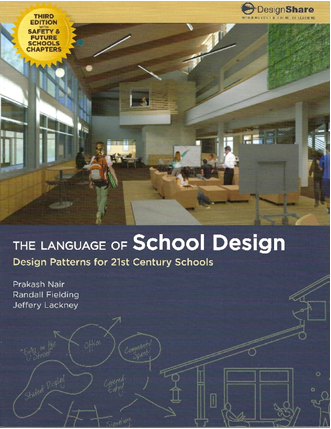 The schoolhouse is possibly the most iconic architecture in any community and yet, perhaps for that very same reason, it is also the most invisible. This presentation will take the cloak of invisibility off the school building, allowing everyone to see it for what it actually is. In the process, attendees will learn to decode the subtle and not-so-subtle messages that a school building sends to its occupants. These messages are so powerful that they have a profound impact on everyone who occupies it and everything that happens within its four walls.
The schoolhouse is possibly the most iconic architecture in any community and yet, perhaps for that very same reason, it is also the most invisible. This presentation will take the cloak of invisibility off the school building, allowing everyone to see it for what it actually is. In the process, attendees will learn to decode the subtle and not-so-subtle messages that a school building sends to its occupants. These messages are so powerful that they have a profound impact on everyone who occupies it and everything that happens within its four walls.
Learning Spaces are an often overlooked but critical “resource” that directly impacts teaching and learning. The manner in which a space is designed and furnished, and all its ancillary qualities such as color, acoustics, lighting, outdoor connections and aesthetics will determine how well it serves the learning that happens there.
This Seminar will describe a key set of design patterns from welcoming entries and learning communities to reflective spaces and collaboration areas, from student cafes and STEAM hubs to DaVinci studios and curiosity centers. Each pattern will be illustrated with suitable international case studies that show not only how these spaces work but also the process of transforming older, dysfunctional spaces into dynamic and powerful places for learning. Suitable follow-up reading materials will be provided.
LEARNING OBJECTIVES
- Seminar participants will learn new “patters” for school design that can used in a variety of contexts to develop highly effective and functional school buildings.
- Participants will be introduced to and learn how to use tools and techniques to measure the effectiveness of learning spaces and use this expertise to provide cost-effective solutions.
- The Seminar will focus on ways in which architectural design can become the vehicle to improve student social, emotional and physical wellbeing as a way to improve their academic achievement and build character.
- Seminar attendees will learn how to improve the efficacy of learning spaces for students through the proper deployment of good acoustics and lighting as well as proper daylighting and outdoor connections. These techniques will not only improve student achievement but also have positive impacts on their overall health and wellbeing.
Learning Spaces Masterclass
Transforming Learning by Design
ABOUT THE MASTERCLASS
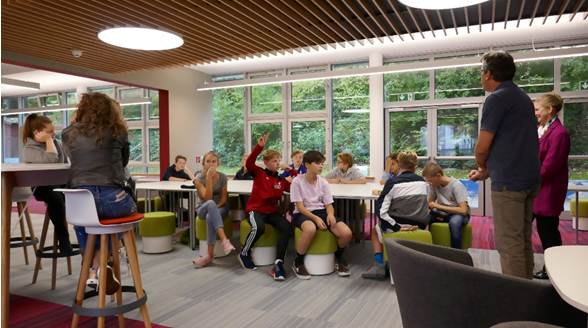 Imagine making this scenario true for both existing and new schools:
Imagine making this scenario true for both existing and new schools:
- Teachers do not spend their day in a traditional classroom
- The number of students any teacher works with varies throughout the school day
- Students are not grouped only by age or grade level
- Hands-on student work dominates activities in learning spaces as opposed to teacher instruction
- Teachers work in interdisciplinary teams and belong to a small, manageable community of students
- True differentiation and personalization is possible so every student can succeed
- There is focus not only on content but developing essential soft skills like problem solving, critical thinking and creativity
- The school provides creative, real-world experiences that students need to be fully prepared for the new world into which they will graduate
This workshop will take attendees systematically through the process of rethinking and redesigning learning spaces to facilitate all eight of the above design criteria for today and tomorrow’s schools. This Masterclass applies both to the design of new schools and additions as well as small and large school renovation projects.
Who Should Attend?
- Principals / Executive Teams
- Directors / Business Managers
- Deputies / Assistant Principals
- Future focused educators / curriculum leads / head of department
- Architects
- Facilities Managers
- Construction Companies
Why Attend?
- A majority of the learning that happens in schools is pre-determined by a design best suited for an industrial, mass-production model. In short, “school hardware” severely limits the “educational software” it can run.
- Learn how to move away from the rigidity of a static building to the agility of a Learning Building. Well-designed school buildings are ever-changing to accommodate the learning that is going on at any given time.
- This masterclass will offer clear and immediately usable strategies for educators to adapt their practice to maximize the benefits of new learning environments.
- Find out how to design the future of learning for your school, and accommodate many more learning modalities, by breaking down classroom-based schools into learning, community-based schools.
- By reshaping schools to represent true Learning Buildings, we have an opportunity to physically manifest new and more powerful philosophies of learning.
- Benefit from specific and immediately usable ideas to transform the learning environment for all students and, by extension, education itself.
Attendance at this Edutech Masterclass counts towards PD/professional learning activities which you can record with your relevant state teacher registration board.
What to Bring?
- Please bring your own laptop, not just a tablet or iPad. Wireless Internet is provided.
MASTERCLASS AGENDA
9:00 | Arrival
9:15 | Masterclass Begins
Introductions
Initial Survey Question
9:30 – 11:00 | Session 1 – Learning by Design
9:30 – 10:00
Presentation and discussion about how to define effective schools in today’s context and what constitutes a student-centered learning space. Discuss differences between student-centered and student-directed learning.
10:00 — 11:00
Masterclass Participants will be given two separate tasks to complete in which they are given an opportunity to apply some of the principles discussed during Session 1. Groups at individual tables will share their work with the larger group.
Learning Outcomes: Closely examine the concept of schooling to understand what methods are likely to yield the greatest benefit regarding student achievement as measured by their ability to succeed in an increasingly complex and global world. Understand the difference between “student-centered” vs. “student-directed” learning. Review and analyze case studies of schools that changed learning spaces to realize improved student outcomes.
11:00 – 11:15 | Morning Coffee Break
11:15 – 1:00 | Session 2 — The Language of School Design
Second Survey Question
This session will focus on Design Patterns and a common “Language of School Design.” During the interactive part of the session, participants will be given two assignments. The first will be to demonstrate their understanding of design patterns. The second will be to produce elements of a “Learning Community” in sketch form.
1:00 – 1:30 | Lunch
1:30 – 2:45| Session Three – Implementation Strategies
Survey Question Three
This session will provide details on a comprehensive process involving all stakeholders of education that will lead to the development of modern schools customized to meet both local and global needs. Participants will also be introduced to new online tools to measure the quality of learning spaces. There will be an interactive component to this session as well
2:45 – 3:15 | Session Four — Wrap-Up and Conclusion
This session will be set aside to answer any outstanding questions from the Masterclass participants and to provide resources for continued learning.
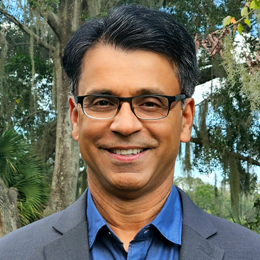
Prakash Nair, AIA
Prakash Nair is a world-renowned architect, futurist and the Founding President & CEO of Education Design International. He is the Co-Founder of Fielding Nair International which, over 16 years, he helped build into a global leader for school design with innovative work in 52 countries on six continents. Prakash has won many international awards including the A4LE MacConnell Award. This is the highest honor worldwide for school design.
Prakash has written dozens of articles in leading education journals and he has written three books. His first book, The Language of School Design is used as a textbook on school design at leading universities. His second book, Blueprint for Tomorrow: Redesigning Schools for Student-Centered Learning was published by the Harvard Education Press and is being used at Universities and as a Teacher Training Manual. His new book Learning by Design co-authored with EDI Principal Architect Roni Zimmer Doctori and Dr. Richard Elmore from Harvard University is quickly becoming the industry gold standard for innovative school design worldwide.
Prakash served as an instructor for Harvard X “Leaders of Learning”, an online course which lets you explore and understand your own theories of learning and leadership. More than 148,000 people from around the world have signed up and attended this course.
Prakash also worked for 10 years as Director of Operations for New York City which had the largest school construction program in the world.
